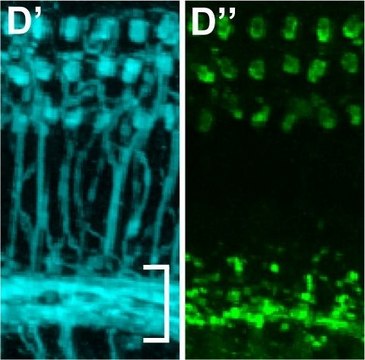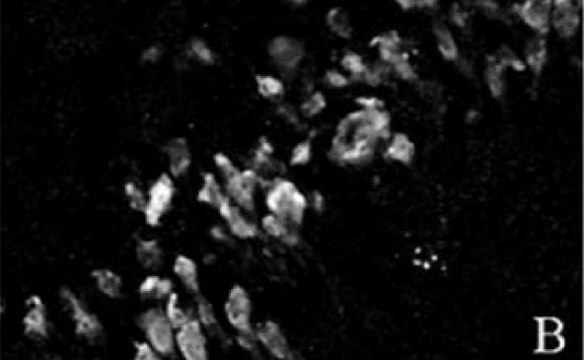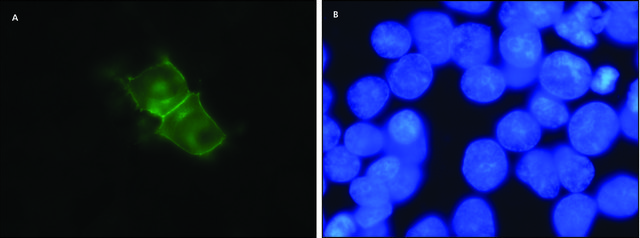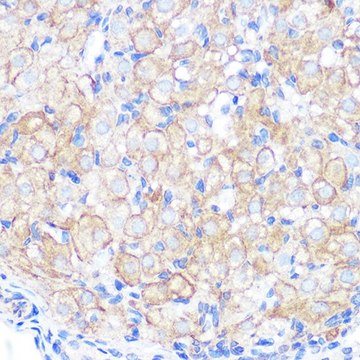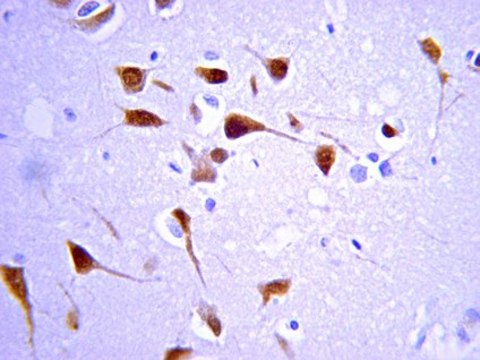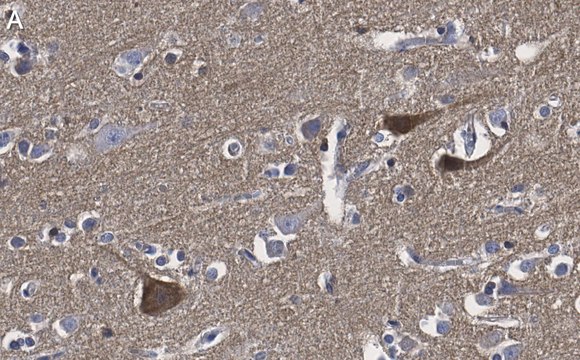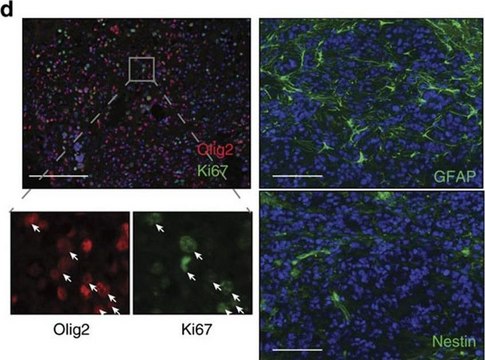AP106R
Rabbit Anti-Goat IgG Antibody, Rhodamine conjugate
1.5 mg/mL, Chemicon®
Sign Into View Organizational & Contract Pricing
All Photos(1)
UNSPSC Code:
12352203
eCl@ss:
32160702
NACRES:
NA.46
Recommended Products
biological source
rabbit
conjugate
TRITC conjugate
rhodamine conjugate
antibody form
F(ab′)2 fragment of affinity isolated antibody
antibody product type
secondary antibodies
clone
polyclonal
species reactivity
goat
manufacturer/tradename
Chemicon®
concentration
1.5 mg/mL
technique(s)
immunofluorescence: suitable
shipped in
wet ice
target post-translational modification
unmodified
Specificity
Goat IgG (H+L)
FLUOROPHORE/PROTEIN ABSORBANCE RATIO
Tetramethyl Rhodamine Isothiocyanate A550/A280 = 0.46
The antibody is isolated from antisera by immunoaffinity chromatography using antigen coupled to agarose beads. No antibody was detected against non-immunoglobulin serum proteins by ELISA, antibodies may react with immunoglobulines from some other species.
FLUOROPHORE/PROTEIN ABSORBANCE RATIO
Tetramethyl Rhodamine Isothiocyanate A550/A280 = 0.46
The antibody is isolated from antisera by immunoaffinity chromatography using antigen coupled to agarose beads. No antibody was detected against non-immunoglobulin serum proteins by ELISA, antibodies may react with immunoglobulines from some other species.
Application
Research Category
Secondary & Control Antibodies
Secondary & Control Antibodies
Research Sub Category
Whole Immunoglobulin Secondary Antibodies
Whole Immunoglobulin Secondary Antibodies
Suggested dilution for most applications: 1:50-1:200 for most applications.Optimal working dilutions must be determined by the end user.
This Rabbit anti-Goat IgG Antibody, Rhodamine conjugate is validated for use in IF for the detection of Goat IgG.
Physical form
Lyophilized. Buffer = 0.01 M Sodium Phosphate, 0.25 M NaCl, pH 7.6 with 15 mg/mL BSA, 0.01% Thimerosal and 0.05% Sodium Azide.
RECONSTITUTION:
Reconstitute to 1 mg/mL with 1.5mL sterile distilled water.
RECONSTITUTION:
Reconstitute to 1 mg/mL with 1.5mL sterile distilled water.
Storage and Stability
Maintain lyophilized product at 2-8°C for up to 12 months. After reconstitution the product is stable for several weeks at 2-8°C as an undiluted liquid. For extended storage after reconstitution, add an equal volume of glycerol to make a final concentration of 50% glycerol followed by storage at -20°C in undiluted aliquots for up to 12 months. Please note the concentration of protein (and buffer salts) will decrease to one-half of the original after the addition of glycerol. Avoid repeated freeze/thaw cycles.
Legal Information
CHEMICON is a registered trademark of Merck KGaA, Darmstadt, Germany
Disclaimer
Unless otherwise stated in our catalog or other company documentation accompanying the product(s), our products are intended for research use only and are not to be used for any other purpose, which includes but is not limited to, unauthorized commercial uses, in vitro diagnostic uses, ex vivo or in vivo therapeutic uses or any type of consumption or application to humans or animals.
Signal Word
Warning
Hazard Statements
Precautionary Statements
Hazard Classifications
Acute Tox. 4 Dermal - Acute Tox. 4 Inhalation - Acute Tox. 4 Oral - Aquatic Chronic 3
WGK
WGK 3
Certificates of Analysis (COA)
Search for Certificates of Analysis (COA) by entering the products Lot/Batch Number. Lot and Batch Numbers can be found on a product’s label following the words ‘Lot’ or ‘Batch’.
Already Own This Product?
Find documentation for the products that you have recently purchased in the Document Library.
Evidence for phenotypic plasticity in aggressive triple-negative breast cancer: human biology is recapitulated by a novel model system.
D'Amato, NC; Ostrander, JH; Bowie, ML; Sistrunk, C; Borowsky, A; Cardiff, RD; Bell et al.
Testing null
Hsiao-Ming Chao et al.
Journal of ocular pharmacology and therapeutics : the official journal of the Association for Ocular Pharmacology and Therapeutics, 29(6), 539-549 (2013-03-30)
Retinal ischemia-associated ocular disorders are vision threatening. This study examined whether the flavonoid baicalein is able to protect against retinal ischemia/reperfusion. Using rats, the intraocular pressure was raised to 120 mmHg for 60 min to induce retinal ischemia. In vitro
Xiao-Qian Liu et al.
Journal of ocular pharmacology and therapeutics : the official journal of the Association for Ocular Pharmacology and Therapeutics, 29(1), 33-40 (2012-10-19)
Retinal ischemia-associated ocular disorders, such as retinal occlusive disorders, neovascular age-related macular degeneration, proliferative diabetic retinopathy, and glaucoma are vision-threatening. In this study, we examined whether and by what mechanisms resveratrol, a polyphenol found in red wine, is able to
Wen-Haur Chao et al.
BMC complementary and alternative medicine, 18(1), 193-193 (2018-06-24)
Presumably, progression of developmental retinal vascular disorders is mainly driven by persistent ischemia/hypoxia. An investigation into vision-threatening retinal ischemia remains important. Our aim was to evaluate, in relation to retinal ischemia, protective effects and mechanisms of Dendrobium nobile Lindley (DNL)
W B Ainsworth et al.
Yeast (Chichester, England), 29(12), 505-517 (2012-11-23)
Monitoring promoter response to environmental changes using reporter systems has provided invaluable information regarding cellular state. With the development of in vivo luciferase reporter systems, inexpensive, sensitive and accurate promoter assays have been developed without the variability reported between in
Our team of scientists has experience in all areas of research including Life Science, Material Science, Chemical Synthesis, Chromatography, Analytical and many others.
Contact Technical Service